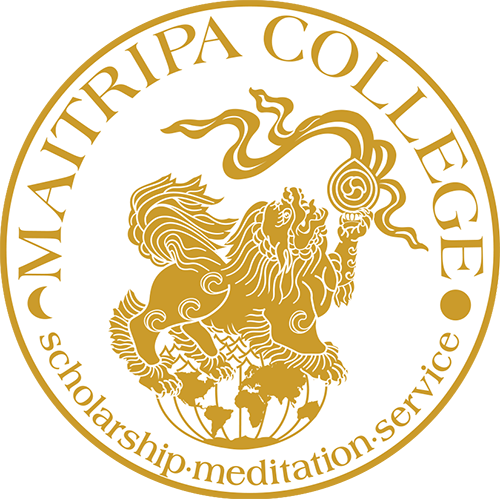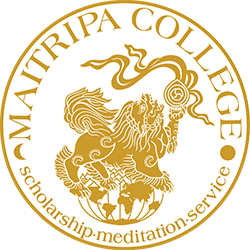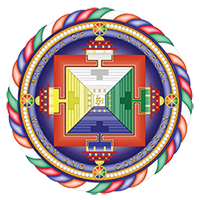Research Resources: Arts & Culture
Engaging Digital Tibet
- Center for Teaching and Learning, Columbia University
- Engaging Digital Tibet was created to enhance the teaching and learning of Tibetan material history. The site contains a repository of Tibetan objects from private collections, Columbia University Libraries, and the Rubin Museum of Art. Searchable and browsable by date, cultural region, source, and object use.
Himalayan Art Resources
- Since 1997, the mission of Himalayan Art Resources (HAR) is to create a comprehensive education and research database and virtual museum of Himalayan art.
- “Himalayan ‘Style’ Art is art that is indigenous to the Himalayas, predominantly Tibet, Nepal, and Kashmir, and the areas under the cultural sway of these cultures. Himalayan ‘style’ art is primarily concerned with religious subjects and is recognizable through the use of composition, symbols, and motifs. Individual works of art are commonly created in sets forming much larger works of art.” — Gene Smith, Ben Brinkley, Jeff Watt. New York, 2001.
Ho Center for Buddhist Studies Research Guide
- Stanford University
- Books and Bibliographies
- Museums and Libraries: Buddhist Collections
- Films About Buddhism
- Buddhist Music and Chanting
Lag Zo: Making on the Tibetan Plateau
- A trilingual online exhibition about daily life of ethnic Tibetans in China produced by the Smithsonian Center for Folklife and Cultural Heritage.
- Making is integral to the Tibetan story. From gilded thangkas to yak-hair shawls, the Tibetan Plateau is home to rich and diverse artisan traditions, including work by weavers, bronze artists, silversmiths, and potters.
- The exhibition employs a place-based approach by grounding the traditions of making in five key cultural and geographic contexts: In the Tent, On the Mountain, In the Shrine, In the City, and On the Move.
Tibet Oral History Project
- “The cause of Tibet is helped by every individual story and together they paint the true history of Tibet.” — Marcella Adamski, Founder and Executive Director
- The Tibet Oral History Project aims to preserve the history and culture of the Tibetan people. Videotaped interviews with over 300 elderly Tibetan refugees—the last generation born in a free, unoccupied Tibet.
Tibetan Culture
Tibetan Oral History Archive Project
- Library of Congress
- The Tibetan Oral History and Archive Project (TOHAP) is a digital online web archive of oral history interviews in Tibetan and Chinese with accompanying written transcripts (in English) that documents the social and political history of modern Tibet. The interview tapes can be listened to simultaneous with reading the transcripts. The translations were made in a literal style to retain a flavor of the original Tibetan.
- An interactive glossary is available to explain Tibetan terms that appear in the transcripts.
- As of April 2019, the portion of the TOHAP Collection that is available online consists of 403 tapes … from interviews with 125 interviewees. This comprises on line approximately 500 hours of recordings and about 11,000 pages of transcripts.
- These interviews were collected by Professor Melvyn C. Goldstein and his assistants/colleagues.
Tibetan International Digital Library
- The Tibetan International Digital Library (TIDL) has been established in order to create integrated access and secure archival conservation for the digital collections of Tibetan cultural resources worldwide.
- Ever since the 1960s, individuals, nonprofit organizations, museums, libraries, and study centers in North America, Europe, and Asia have worked to document, preserve, and make accessible as much as possible of Tibet’s cultural heritage. These unique and vitally important surviving documentary materials – collections of classical texts; audio and video recordings and/or transcripts of oral commentaries; translations of classical texts in modern languages; and photographic, video, and film documentation of arts traditions and historical events—are now held in collections which are scattered around the world.
- In Phase One of the project, the Orient Foundation for Arts and Culture (which holds the largest collection of digitized audio commentarial recordings of classical texts together with video documentation of classical arts traditions) will be working with the world’s largest collection holders of digitized classical texts to create unified multimedia access to these major textual and oral commentarial collections and, concurrently, will be building the technical infrastructure for creating unified access to the further more than two hundred primary digital resource collections worldwide.
Curated Image Galleries and Visual Stories Created by the Google Cultural Institute
Bogd Khaan Palace Museum
- The complex was built between 1893 and 1903 named The temple of Developing Wisdom and dedicated to the 8th Bogd Jetsun Dampa, the head of Mongolian religion. The Bogd Khaan Palace Museum consists of seven Summer Prayer temples and the Winter Palace.
- The collections of the museum include unique and valuable objects related to Mongolia’s political, religious, and artistic history from the 17th to early 20th centuries: bronze casting, silk paintings, mineral paintings, and papier mache icons … as well as objects owned and used by eighth Bogd Jetsun Dampa and his wife Queen Dondogdulam, including royal clothing and equipment, gifts from domestic and foreign guests or representatives, and items purchased by the king for his own diversion.
Hwajeong Museum
- Tibetan paintings, thangka.
Indian Buddhist Art
- The Indian Museum, Kolkata organized an exquisite exhibition titled Indian Buddhist Art, showcasing masterpieces of Buddhist Art from different parts of Indian sub-continent. The exhibition travelled to Shanghai Museum, China, Tokyo National Museum, Japan, Asian Civilizations Museum, Singapore and National Museum, New Delhi. After its great success, the exhibition returned to Indian Museum, Kolkata. In the Indian Museum, Kolkata the exhibition was inaugurated on 2nd February 2016 and continued till 31st May, 2016.
- The exhibition comprises 91 objects from Indian sub-continent which displays a visual expression of stories associated with the life of the Buddha, spread of the religion, Buddhism and development of the art which is known as Buddhist Art.
Honoring Nepal: People Places, Art
- On April 25, 2015, massive earthquakes caused high death tolls, injuries, and widespread destruction. This exhibition honors Nepal’s distinct contributions to art, culture, and history.
Nalanda: from Mound to Monument (1917-1927): Image gallery and 360 degree tours of Nalanda, from the start of archaeological work 100 years ago to today.
Rajghat: Varanasi through the Millenia The archaeological mounds at Rajghat represent the ancient settlement of Varanasi on the northern outskirts of the city, near the confluence of Ganga and Varana. This exhibit is about some aspects of Rajghat’s excavation.
Sarnath: Turning the Wheel of Law: Photo gallery and excavation history of Sarnath.
Tibet: Made by Tibetans: Contemporary artists from Tibet.
Tibet Oral History Project: The goal of the Tibet Oral History Project is to document the life stories of Tibetan elders living in exile, and to disseminate that information through print, broadcast media, and the Internet for the purposes of education and preservation of the culture and history of Tibet.
Tibetan Dragon Buddhist Cannon: One of most renowned cultural relics at the Southern Branch of the National Palace Museum (Taiwan).
Tibetan Dwellings: Settlement and housing in Tibet.
Travel’s of Xuanzang (629-645 CE): Ten thousand miles along the Silk Road and Indian subcontinent.
Xuanzang’s Travels in Bihar (637-642 CE): Xuanzang in the footsteps of the Buddha.


